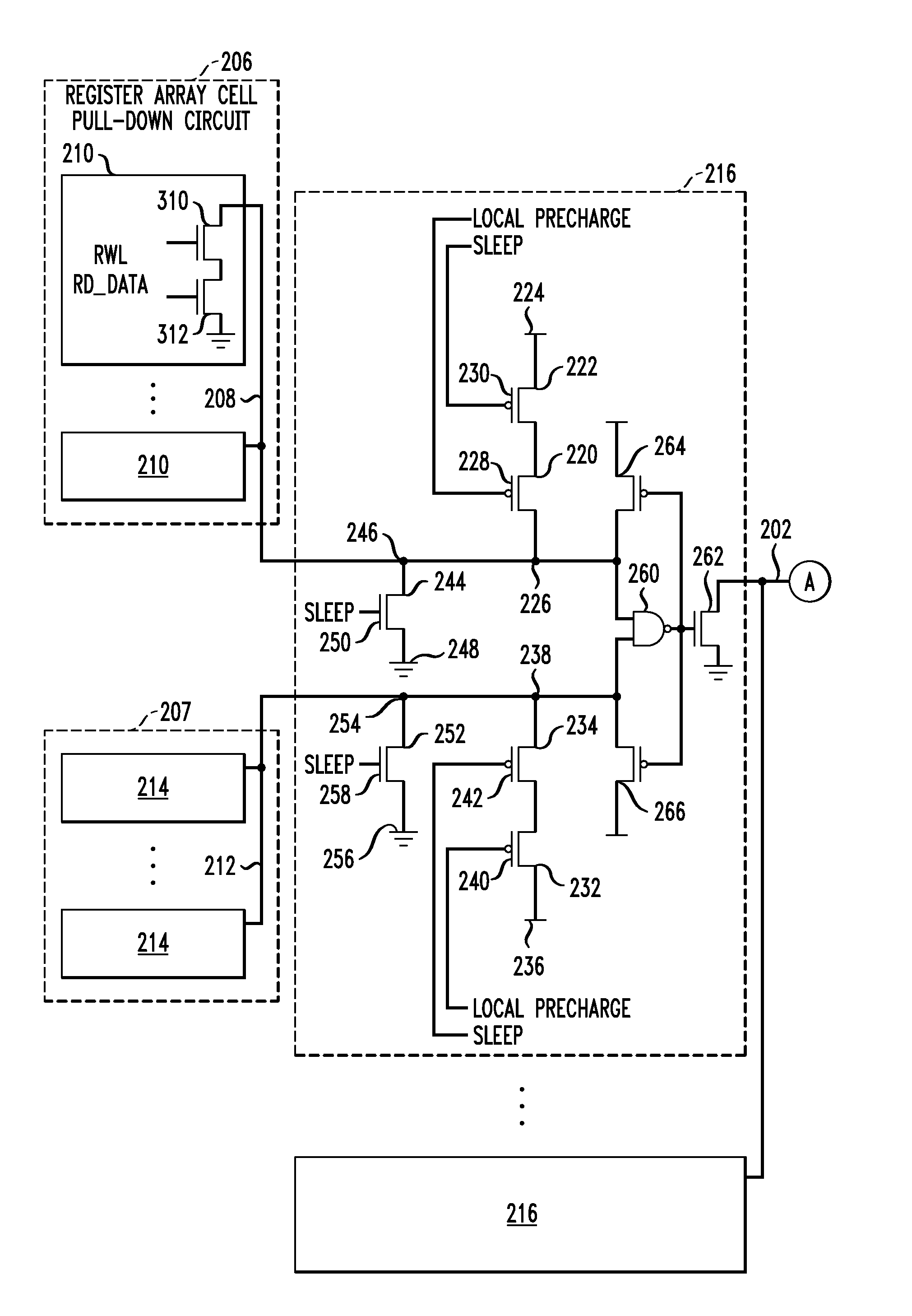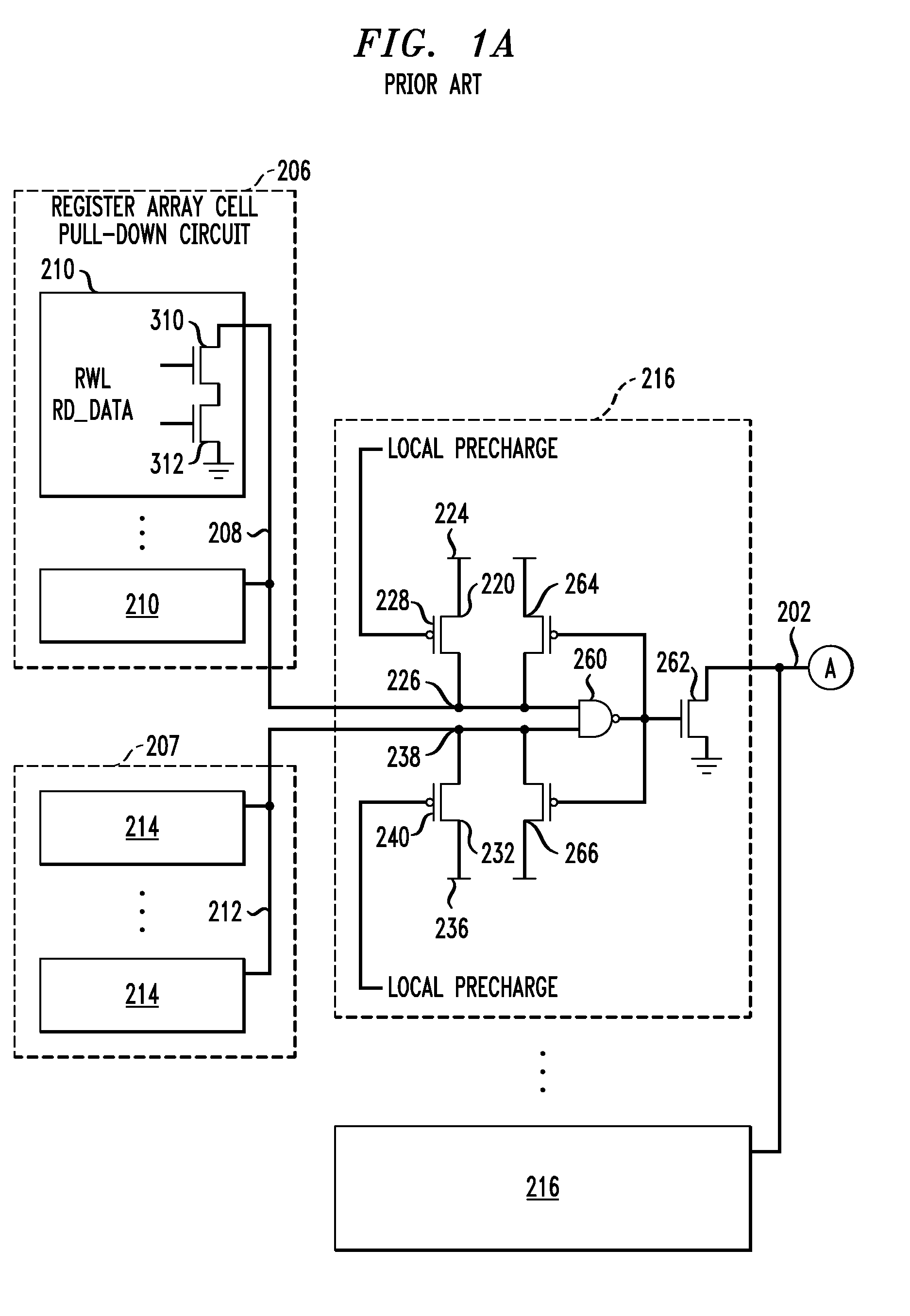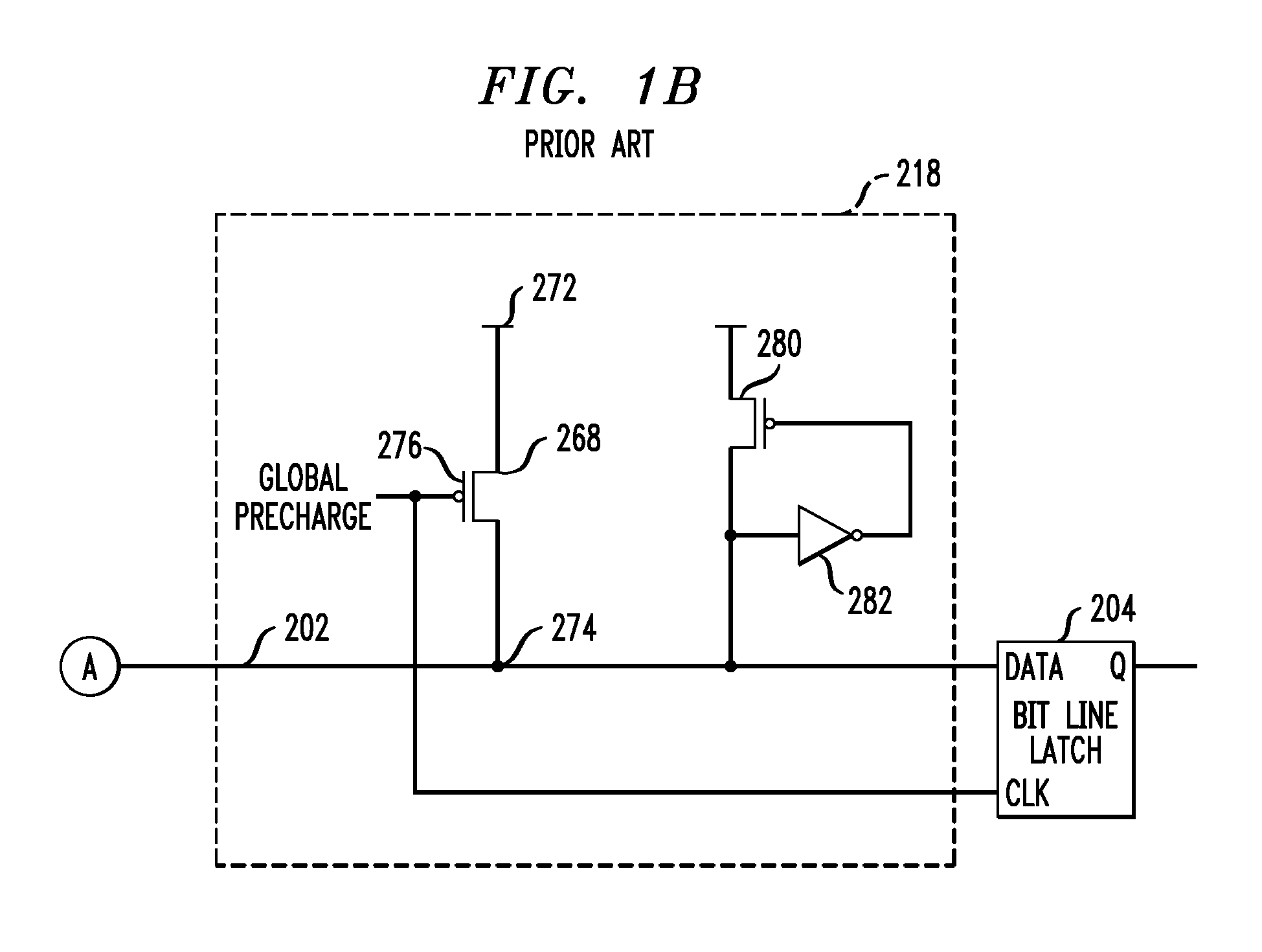Memory circuits with reduced leakage power and design structures for same
a memory circuit and leakage power technology, applied in the field of electronic memory circuits, can solve the problems of substantial leakage power through the pull-down transistor of the register array cell, active power, and substantial leakage power, and achieve the effect of reducing leakage power
- Summary
- Abstract
- Description
- Claims
- Application Information
AI Technical Summary
Benefits of technology
Problems solved by technology
Method used
Image
Examples
Embodiment Construction
[0015]Embodiments of the invention discharge the bit lines to ground, instead of keeping them in a pre-charged phase, thereby saving substantial stand-by power (leakage power) in, for example, dynamic register arrays. If and when a large dynamic register array is not required to be accessed for a long period of time, control logic issues a ‘SLEEP’ signal to the array, and that signal will substantially immediately cause discharge of all local bit lines (LBL) and all global bit lines (GBL) from their pre-charged states. The same SLEEP signal will also disable further pre-charging of local and global bit-lines. When the register array needs to be accessed again, the SLEEP signal will go low (that is, in the exemplary embodiment, assume a “low” or “zero” logical state) and one additional pre-charge-evaluate cycle will bring the array to a normal read mode.
[0016]One or more embodiments of this power-saving technique are advantageous when there is a need to shut-down a large dynamic regi...
PUM
 Login to View More
Login to View More Abstract
Description
Claims
Application Information
 Login to View More
Login to View More - R&D
- Intellectual Property
- Life Sciences
- Materials
- Tech Scout
- Unparalleled Data Quality
- Higher Quality Content
- 60% Fewer Hallucinations
Browse by: Latest US Patents, China's latest patents, Technical Efficacy Thesaurus, Application Domain, Technology Topic, Popular Technical Reports.
© 2025 PatSnap. All rights reserved.Legal|Privacy policy|Modern Slavery Act Transparency Statement|Sitemap|About US| Contact US: help@patsnap.com



